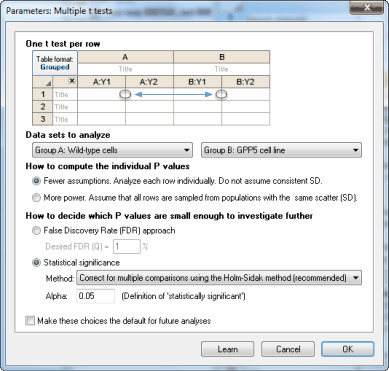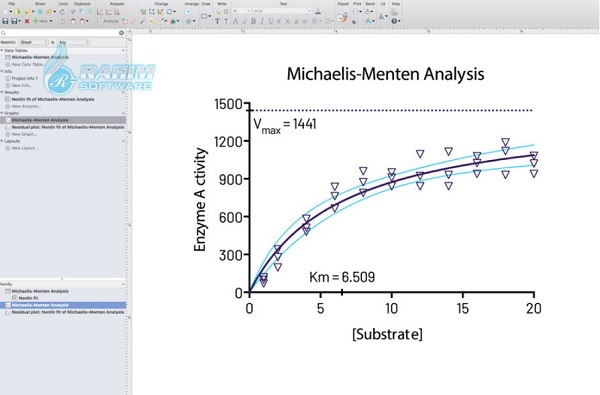


The left-to-right order of data sets in Prism must correspond to equally spaced ordered categories. Examples would be if the groups are different age groups, different disease severities, or different doses of a drug. The test for trend is only relevant when the order of groups (defined by data set columns in Prism) is logical. For the details on the first and third choices, look in the previous section. With three or more data sets, Prism offers three ways to compare survival curves. Curve comparison calculations: Comparing three or more survival curves Choose the Gehan-Breslow-Wilcoxon test only if you have a strong reason to do so. If in doubt, report the logrank test (which is more standard). But if the sample size is large, neither the logrank nor the Wilcoxon-Gehan test rests are helpful when the survival curves cross near the middle of the the time course. This could just be a coincidence of random sampling, and the assumption of proportional hazards could still be valid. If the two survival curves cross, then one group has a higher risk at early time points and the other group has a higher risk at late time points. The Gehan-Breslow-Wilcoxon test does not require a consistent hazard ratio, but does require that one group consistently have a higher risk than the other. One example of proportional hazards would be if the control group died at twice the rate as treated group at all time points. Proportional hazards means that the ratio of hazard functions (deaths per time) is the same at all time points. It is the more powerful of the two tests if the assumption of proportional hazards is true. In contrast, the logrank test gives equal weight to all time points. But the results can be misleading when a large fraction of patients are censored at early time points. This method gives more weight to deaths at early time points, which makes lots of sense. This method is also called the Mantel-Cox method. Prism uses the Mantel-Haenszel approach but uses the name 'logrank' which is commonly used for both approaches.

The two are almost equivalent, but can differ a bit in how they deal with multiple deaths at exactly the same time point. Prism can compare two survival curves using two methods. Curve comparison calculations: Comparing two survival curves But some institutions use the opposite convention. The default choices are to use the code '1' for deaths and '0' for censored subjects, and these are almost universal. You don't need to click Analyze or make any choices on the parameters dialog.įrom the results, you can click the analysis parameters button to bring up the parameters dialog, if you want to make any changes. When you enter data on an survival table, Prism automatically performs the analysis. The survival analysis is unique in Prism.

Prism analyzes survival curves without you having to choose any analysis


 0 kommentar(er)
0 kommentar(er)
